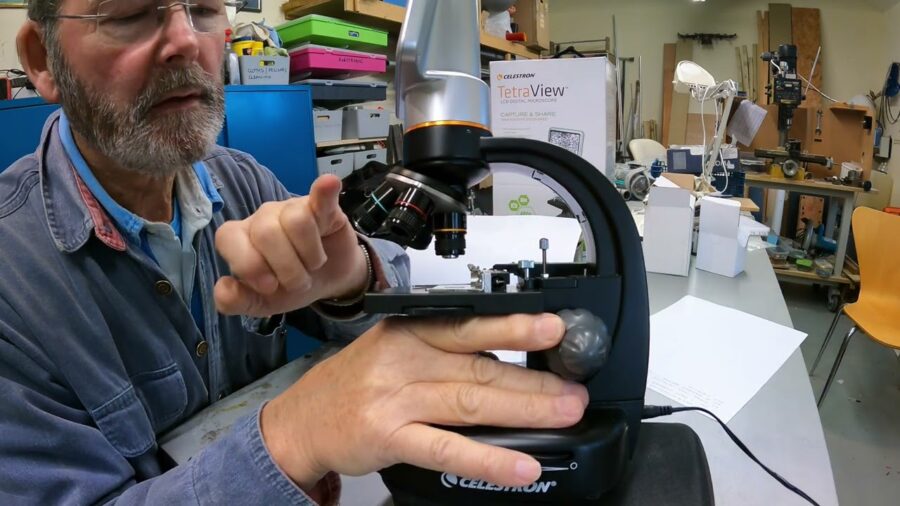Microscopes, especially the digital type, have grown in popularity in recent years because of their several advantages over the traditional optical alternative. The advanced one is a type of optical microscope that uses a digital camera to take photographs of samples. These photos can be shown on a computer screen or other digital device. So, whether you’re a student, a scientist, or someone who wants to explore the world around you, this guide will go over the various types of digital microscopes on the market and what you should know before purchasing one.
Types

Observe cells and bacteria or any viewing objects too small for the naked eye with precision and ease with a next-level digital microscope. There are two types: high power and low power. High-power microscopes, known as compound microscopes too, are more popular and are frequently utilized by schools for use in biology and chemistry labs.
They examine minute things such as blood cells and living organisms in water collected from a nearby stream or pond. These send light through the specimen to make it visible. High-power microscopes can achieve magnifications of up to 1000x, even though most applications only require 400x. Low-power digital microscopes, also known as stereo microscopes, frequently include both an upper and lower light that can reflect or transmit light, allowing for the examination of transparent and solid specimens.
However, 80x is typically the maximum magnification, with 20-40x being the more commonly used range, making the low-power microscope perfect for coin and stamp collectors, entomologists, geologists, and jewellery manufacturers. Low-power microscopes often include two eyepieces that function in concert with an objective lens to give a specimen “depth” or a three-dimensional appearance when viewed.
There are three types of low-power microscopes, and the type of application you use them for will indicate which model is appropriate for you. These types are: single power (single magnification), dual power (two magnification options), and zoom (a variety of magnification options). Zoom magnification microscopes are the most user-friendly since they display a wide range of magnifications and allow you to select the one that best suits your needs.
Additionally, there’s a model of digital microscope that links to a computer or other digital device using a USB connector. It’s known as USB microscope. This option is very similar to ordinary optical microscopes, but instead of utilising a separate camera to take an image, people use the built-in camera on their computers or smartphones. Being easily linked to a computer or laptop for image capture and analysis, USB digital microscopes are commonly utilized in educational and research settings.
The Difference
Unlike traditional microscopes, which magnify images with lenses and mirrors, a digital microscope produces images with a charge-coupled device (CCD) sensor. This sensor turns light into electrical signals, which are then translated into digital images by the microscope’s software. The digital alternative has numerous advantages over the older counterpart.
For starters, it’s significantly simpler to use because there is no need to focus the lenses or align the mirrors. Furthermore, digital microscopes can take high-resolution photos and films of specimens, which can be saved to a computer or other digital device for subsequent viewing. Since digital microscopes generate images electronically, they can be quickly shared with others via email, social media, or online file-sharing platforms.
Important Buying Considerations

The first step in finding the best digital microscope Canada-wide is determining the type you require. As previously noted, there are three types and each has its own set of features and benefits, so pick the one that best suits your requirements. One of the most significant considerations when picking a digital microscope is resolution.
Resolution is the number of pixels in an image and is measured in megapixels (MP). The greater the resolution, the more information you can see in your photographs. Most digital microscopes have a resolution of 5 megapixels or greater, which is enough for most purposes. However, if you need to take extremely detailed photographs, you should go for a 10-megapixel resolution or even greater.
Another important thing to consider when selecting a microscope is magnification. Magnification is the digital microscope’s ability to expand an image and is expressed in terms of x (e.g., 20x, 50x, 100x). Most microscopes that are digital have a magnification range of 20x to 50x, which is enough for most purposes. However, if you need to catch very few objects or details, you should consider using one with a higher magnification.
When picking, it’s important to also examine the type of camera. Digital ones use two types of cameras: CCD and CMOS. CCD cameras are often more expensive than CMOS, but they produce higher image quality. CMOS cameras are less expensive, but they do not produce the same image quality as CCD cameras.
The lighting type is yet another crucial buying consideration. With these microscopes, there are two types of lighting: LED and fluorescent. LED lighting costs more than fluorescent lighting, but it produces higher image quality. Fluorescent lighting, on the other hand, is less expensive but doesn’t produce the same image quality as LED illumination.



